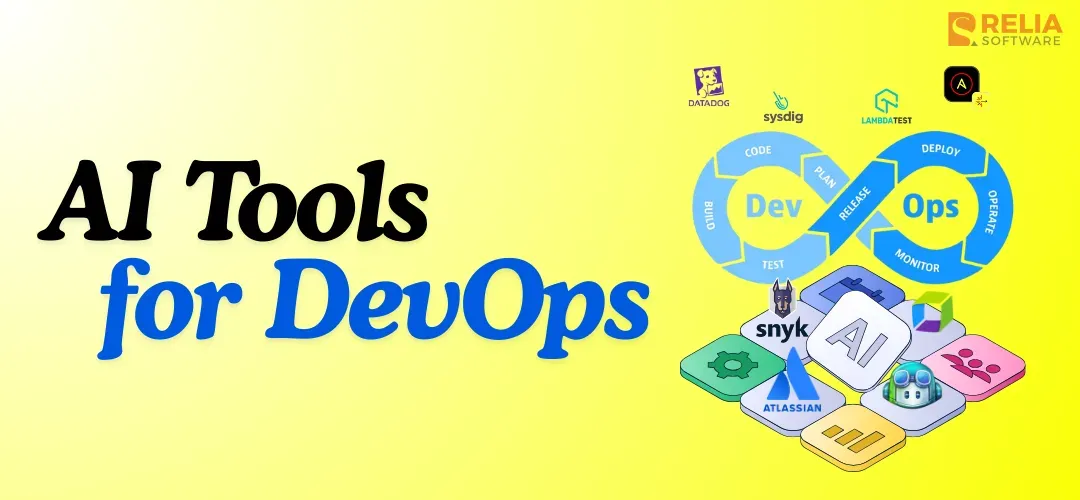With cloud systems, microservices, and constant deployments, it’s becoming harder for DevOps engineers to track everything manually. This is where AI becomes essential. AI tools now support the entire DevOps workflow, helping teams write code, secure it, automate pipelines, and even predict production issues before they happen.
In this guide, we will provide you with the list of the best AI tools for DevOps and explain exactly how they fit into your workflow. After reading this blog, we hope you can choose the right AI technology to boost your team’s speed, quality, and reliability.
>> Read more: 7 Ways DevOps Speeds Up the Digital Transformation
Where AI Tools Can Help in DevOps Workflows?
AI helps DevOps teams work faster by handling repetitive tasks and analyzing large amounts of data across the pipeline. Here are the main areas where AI tools for DevOps make a big difference:
- Code help: Suggest code, functions, and docs in real time to speed up development.
- IaC generation: AI can turn simple text instructions into full YAML or config files for IaC tools like Terraform or Ansible.
- Security checks: Predicts and finds vulnerabilities early and suggests fixes before deployment.
- Smarter testing: Using machine learning to identify and run only the tests that matter for each code change, making CI faster.
- Anomaly detection: Learn normal system behavior and alert teams when something looks wrong.
- Root cause analysis: AI connects logs, metrics, and traces to identify the exact cause of an incident quickly.
- Cloud cost savings: Spot inefficient code and suggest ways to cut cloud costs.
12 Best AI Tools for DevOps Teams
GitHub Copilot
GitHub Copilot is one of the most widely used AI tools for developers. It started as an autocomplete helper, but newer features make it feel more like a smart coding partner that can take on full tasks, not just single lines of code.
Primary Use Case: AI-driven code creation and workflow automation across IDE and GitHub.
Key AI Features
- Inline code suggestions: Suggests lines of code, functions, and templates as you type in your editor, reducing time spent on syntax or boilerplate.
- Copilot Chat and CLI: Let you ask questions about your codebase or generate shell commands using natural language.
- Copilot Coding Agent: Automatically take a GitHub Issue, create a branch, write the needed code and tests, and open a Pull Request for your review.
- PR summaries: Automatically writes clear summaries of Pull Request changes to speed up code reviews.
Ideal For: Teams using GitHub who want quicker coding, higher productivity, and automated setup for early fixes and features.
>> Read more:
- Tabnine vs Copilot: Which is A Better AI-Driven Coding Tool?
- Cursor vs Copilot: Which is A Better AI-Powered Coding Tool?
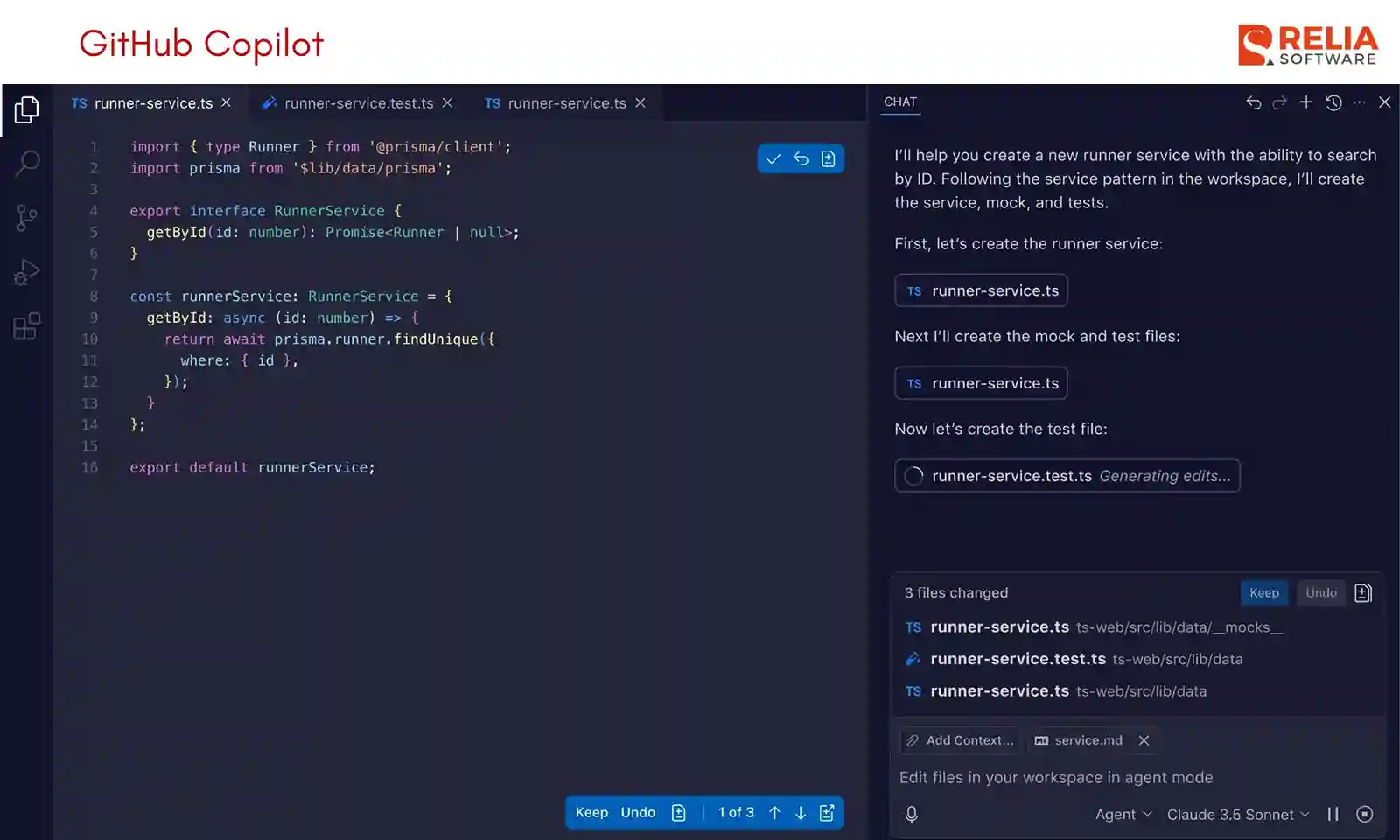
Atlassian Intelligence
Atlassian Intelligence is not a single product; it’s the AI layer built into Jira, Confluence, Bitbucket, and other Atlassian tools. Its real strength comes from the Teamwork Graph, which understands the relationships between tickets, documents, code, and team activity.
Primary Use Case: Workflow automation and intelligence across your project and delivery tools.
Key AI Features
- Natural language automation: Turn plain English into JQL queries, Jira automation rules, or Bitbucket Pipeline configs without writing technical syntax.
- Rovo Dev Agent: Creates code plans, opens branches, writes starter code, and proposes code reviews based on a Jira issue detail.
- Intelligent summaries: Summarizes long Jira tickets, Confluence pages, or pull request discussions, helping team members ramp up or respond faster.
Ideal For: Teams using Atlassian who want to work smoothly across tracking, documentation, and CI/CD.
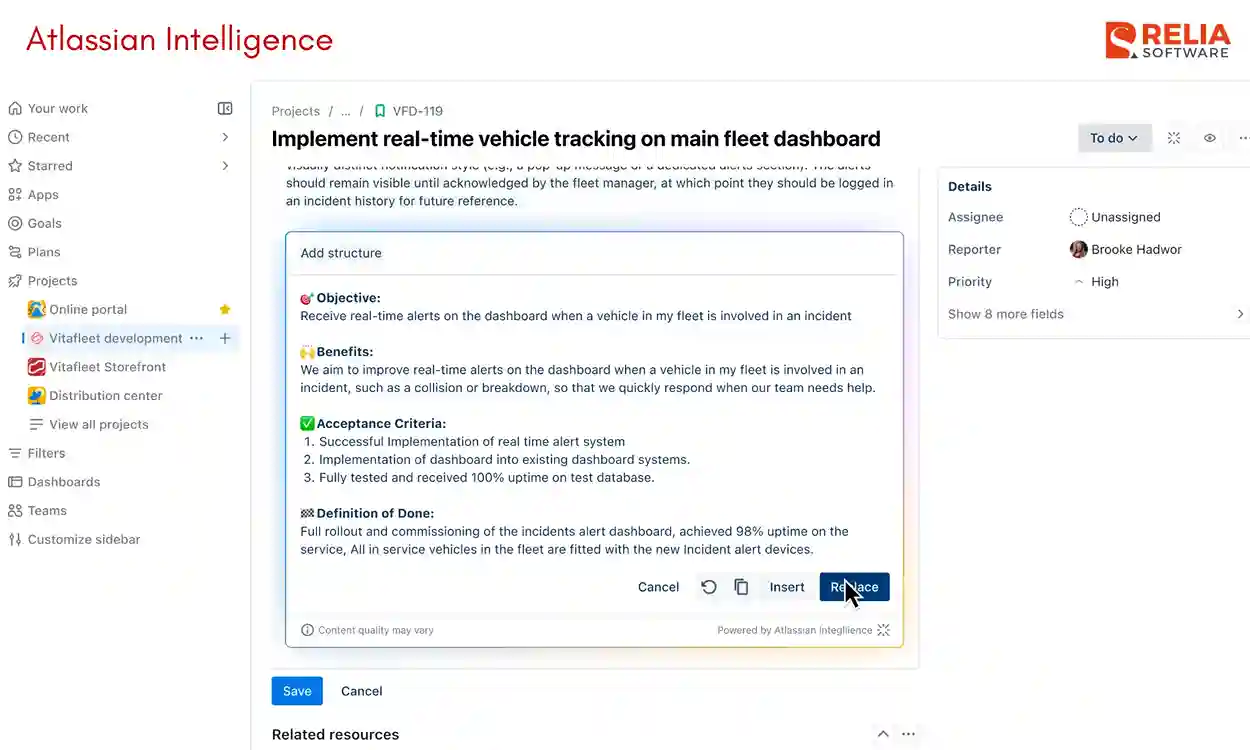
Ansible Lightspeed
Ansible Lightspeed with IBM WatsonX Code Assistant brings generative AI into Infrastructure as Code (IaC) and IT automation. It makes it much easier for teams to create reliable Ansible Playbooks and Roles, even for complex tasks.
Primary Use Case: AI-powered IT automation for faster Ansible Playbooks and Roles generation.
Key AI Features
- Natural language playbook generation: Describe the task you want to automate in plain English, then Lightspeed generates the full YAML for a working Ansible Playbook.
- Content source matching: Shows the possible references behind each suggestion so teams can verify accuracy, trust the output, and check licensing.
- Model customization: Let's organizations fine-tune the model using their own Ansible content so the generated code follows internal standards and patterns.
Ideal For: Infrastructure and operations teams using Ansible for configuration management.
>> Read more: Top 10 Full-Fledged Configuration Management Tools For Developers
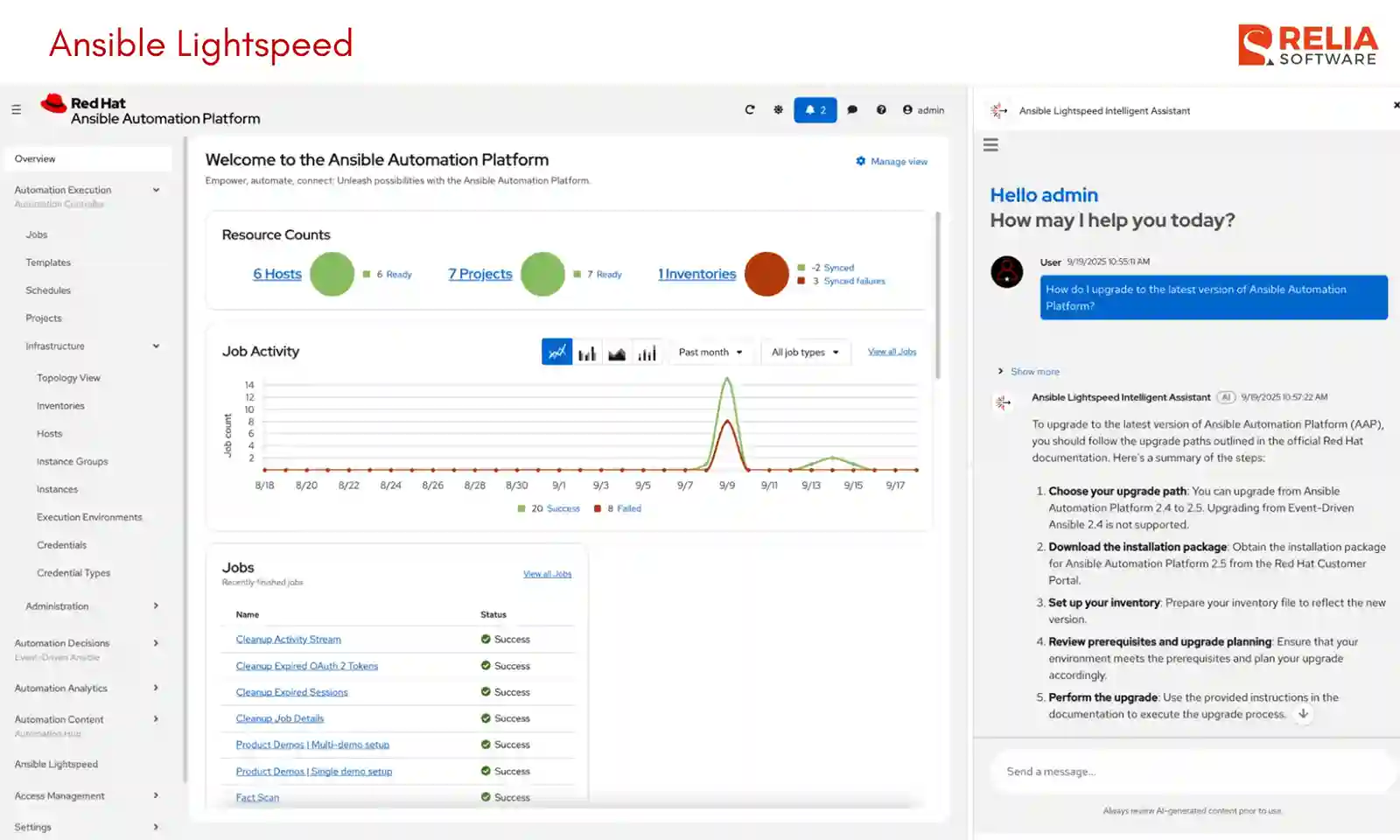
Harness
Harness is an all-in-one software delivery platform with CI/CD, cloud cost management, and security testing. Its built-in AI features help make deployments safer, faster, and more efficient.
Primary Use Case: Intelligent software delivery with AI-driven testing, verification, and cost optimization.
Key AI Features
- Continuous Verification (CV): Uses machine learning to review production logs and metrics after each deployment. It can automatically decide whether a release should be rolled back to prevent customer impact or not.
- Service Reliability Management (SRM): Uses AI to define SLOs, calculate service health scores, and predict when a service may breach those SLOs based on current behavior.
- Test Intelligence: Analyzes code changes and past test results to run only the tests that matter for that update, reducing CI/CD pipeline time significantly.
Ideal For: Organizations that want an end-to-end delivery platform.

LambdaTest
LambdaTest is known for cross-browser and real-time testing, but it now includes AI features that make automation testing faster, more accurate, and easier to maintain. These improvements help QA and DevOps teams ship quality faster.
Primary Use Case: Smart test orchestration and AI-driven visual regression testing for modern web and mobile applications.
Key AI Features
- Test orchestration: AI decides the best order to run test cases, prioritizing tests that are more likely to fail or provide fast insights, giving developers quicker feedback.
- Smart visual regression: AI can tell the difference between real visual bugs and intentional UI updates, reducing false positives from traditional pixel-based comparisons.
- Automatic flaky test detection: AI reviews past test runs and environment data to detect unreliable tests, helping teams fix the root causes of intermittent failures.
Ideal For: QA and DevOps teams needing reliable cross-browser testing for large or complex test suites.
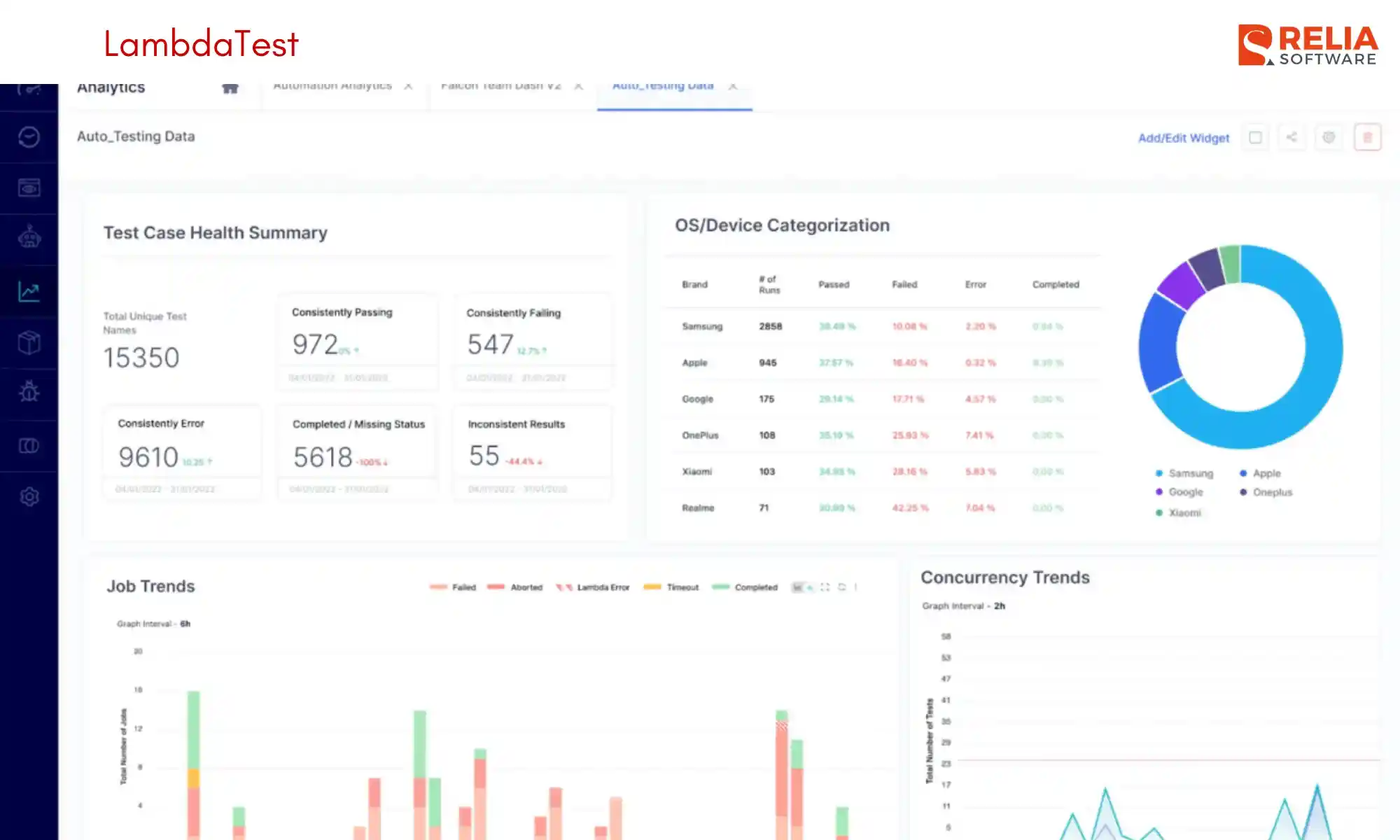
Snyk
Snyk is a well-known security platform that uses AI to find, prioritize, and fix vulnerabilities in code, open-source packages, containers, and Infrastructure as Code (IaC).
Primary Use Case: Developer-first security with fast fixes across the full stack.
Key AI Features
- Prioritization engine: Uses ML to determine which vulnerabilities are most likely to be exploited in your specific application, helping teams focus on the highest-risk issues.
- AI-powered fixes: Creates smart, context-aware fixes that developers can apply with one click, speeding up normally slow security tasks..
- Code review insights: Offers AI-driven suggestions and explanations during development, helping teams learn and apply secure coding practices as they work.
Ideal For: Teams wanting seamless security, especially those using many open-source packages.
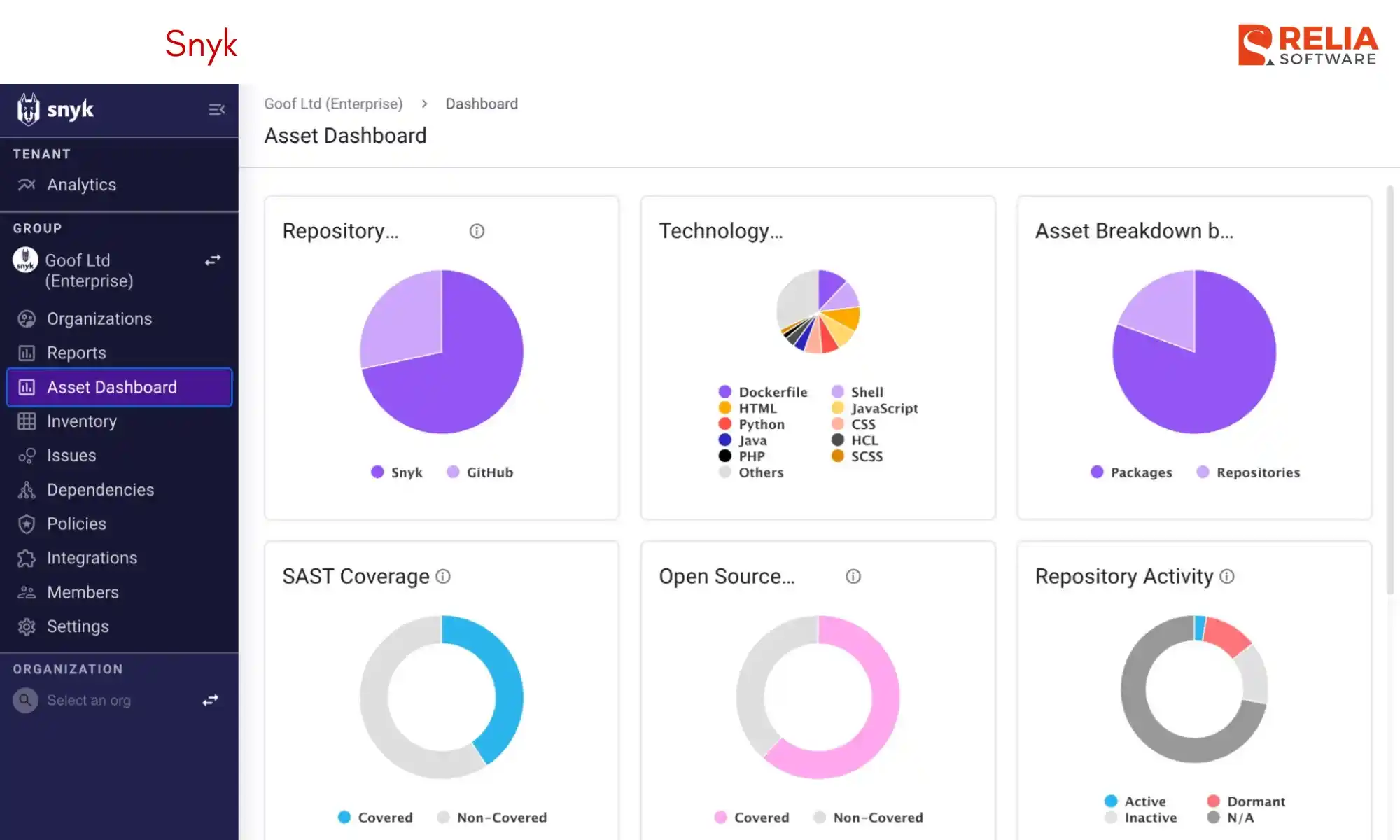
AWS CodeGuru
AWS CodeGuru is an ML-powered service that offers smart suggestions to improve code quality and find expensive or hard-to-spot issues in your applications. It includes two main parts: Reviewer and Profiler.
Primary Use Case: Automated code reviews and performance optimization for Java and Python applications running on AWS.
Key AI Features
- CodeGuru Reviewer: Trained on billions of lines of code, it flags security risks, critical issues, and AWS best-practice violations, and provides clear steps to fix them.
- CodeGuru Profiler: Analyzes runtime data to find CPU-heavy or costly methods that impact performance and cloud spend.
- Cost optimization insights: Convert performance bottlenecks into estimated dollar costs, enabling teams to address issues with the biggest financial impact.
Ideal For: Teams running Java or Python who want smarter reviews and better performance, and cost control.
>> Read more: Top 10 Automated Code Review Tools For Developers
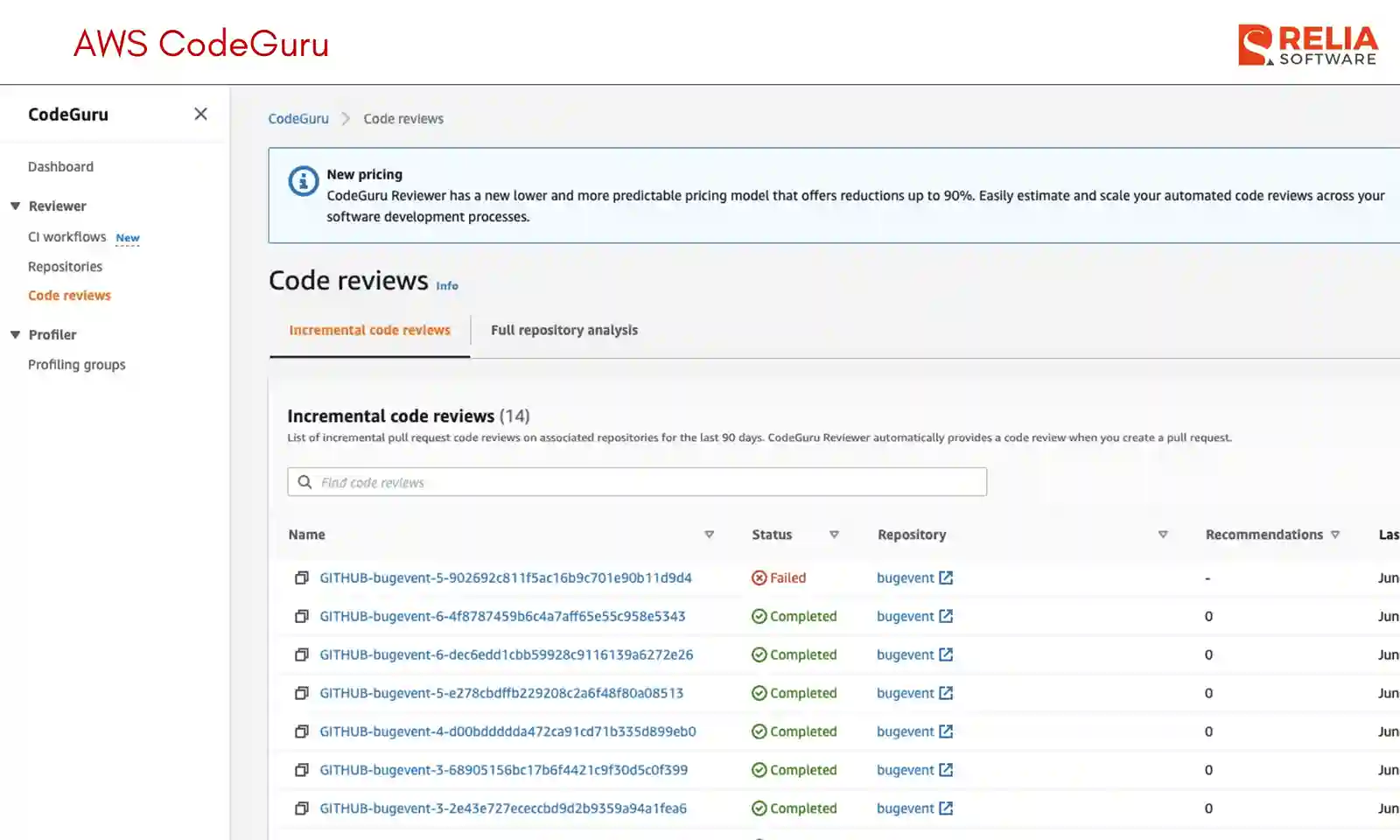
Sysdig
Sysdig focuses on cloud-native security and visibility, using AI to monitor Kubernetes and container environments in real time. It helps teams detect threats quickly and understand what’s happening inside their running workloads.
Primary Use Case: Runtime security and container visibility, with a strong focus on threat detection and vulnerability prioritization.
Key AI Features
- Behavioral anomaly detection: Learns the normal activity of each container and Kubernetes service, then alerts the team when something behaves differently..
- Prioritized risk management: Uses threat intelligence and machine learning to rank vulnerabilities based on real runtime usage. If a vulnerable image is actively running, it’s flagged as higher risk.
- AI-powered compliance: Monitors runtime behavior against standards like PCI or HIPAA and highlights any actions that violate policy.
Ideal For: DevSecOps teams using Kubernetes needing strong runtime security and production visibility.
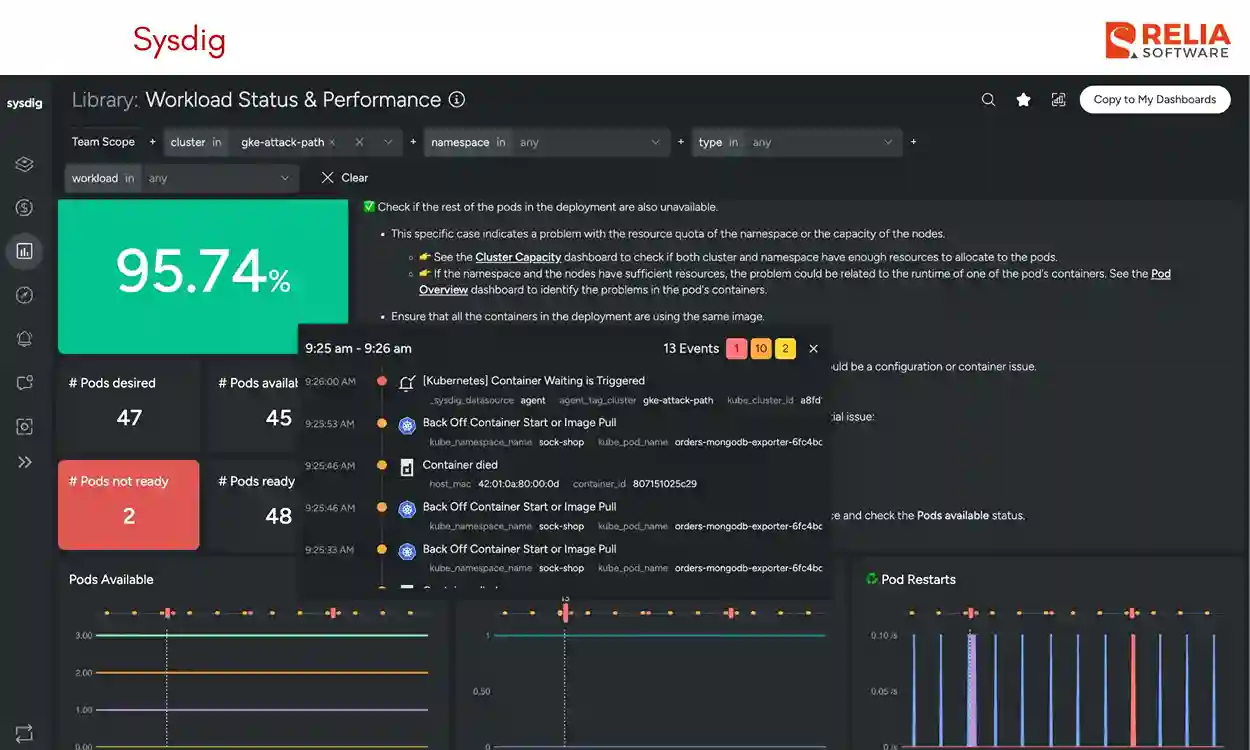
Datadog
Datadog brings together all major types of monitoring data into a single platform and correlates them automatically. It uses machine learning to analyze monitoring data and quickly surface issues, helping teams spot anomalies early and focus on the most important incidents.
Primary Use Case: Unified observability and proactive anomaly detection across infrastructure, applications, and logs.
Key AI Features
- Watchdog AI: Automatically detects unusual behavior and connects related events.
- Log pattern analysis: Groups millions of log lines into clear patterns, making it easier to see common problems and spot new or unusual issues without reading logs manually.
- Forecast monitors: Use time-series analysis to predict when critical resources may hit their limits, giving teams time to fix issues before they become outages.
Ideal For: Teams needing a unified view of monitoring data for large cloud-native systems.
>> Read more: Top 15 Application Monitoring Tools For Businesses
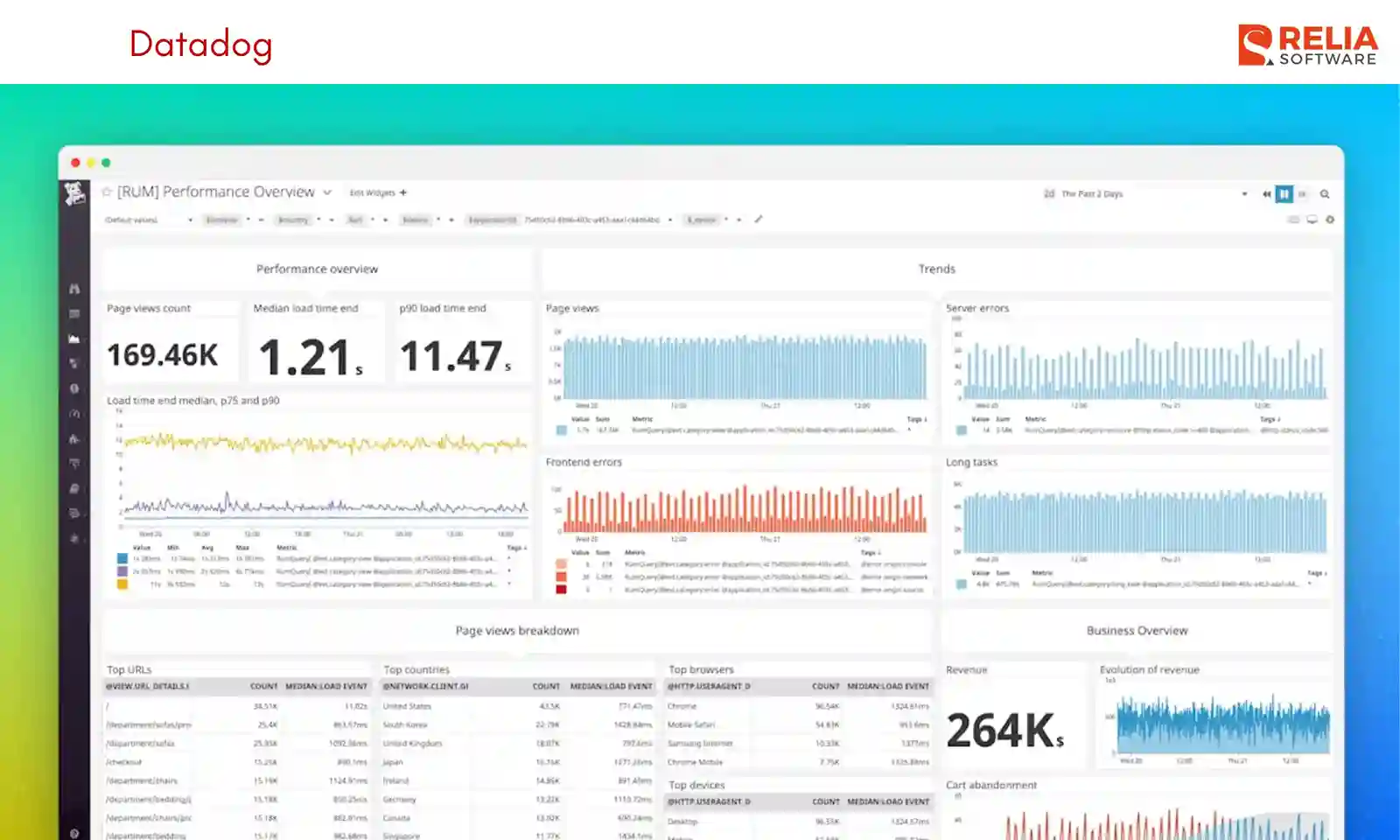
Dynatrace
Dynatrace uses its deterministic AI engine, Davis, to deliver highly accurate root cause analysis (RCA). This helps teams cut MTTR significantly, especially in large and complex cloud environments.
Primary Use Case: Precise root cause analysis and autonomous cloud management.
Key AI Features
- Davis AI Engine: Traces every dependency, from user experience down to individual code execution, to pinpoint the true root cause, not just related symptoms.
- Automatic structure mapping: Continuously learns and updates the full map of your environment and its dependencies, keeping RCA accurate even in fast-changing Kubernetes setups.
- Root-cause alerting: Sends one clean, high-quality alert for the real issue instead of flooding teams with multiple alerts triggered by the same outage.
Ideal For: Enterprises with complex cloud-native systems that need to minimize MTTR.
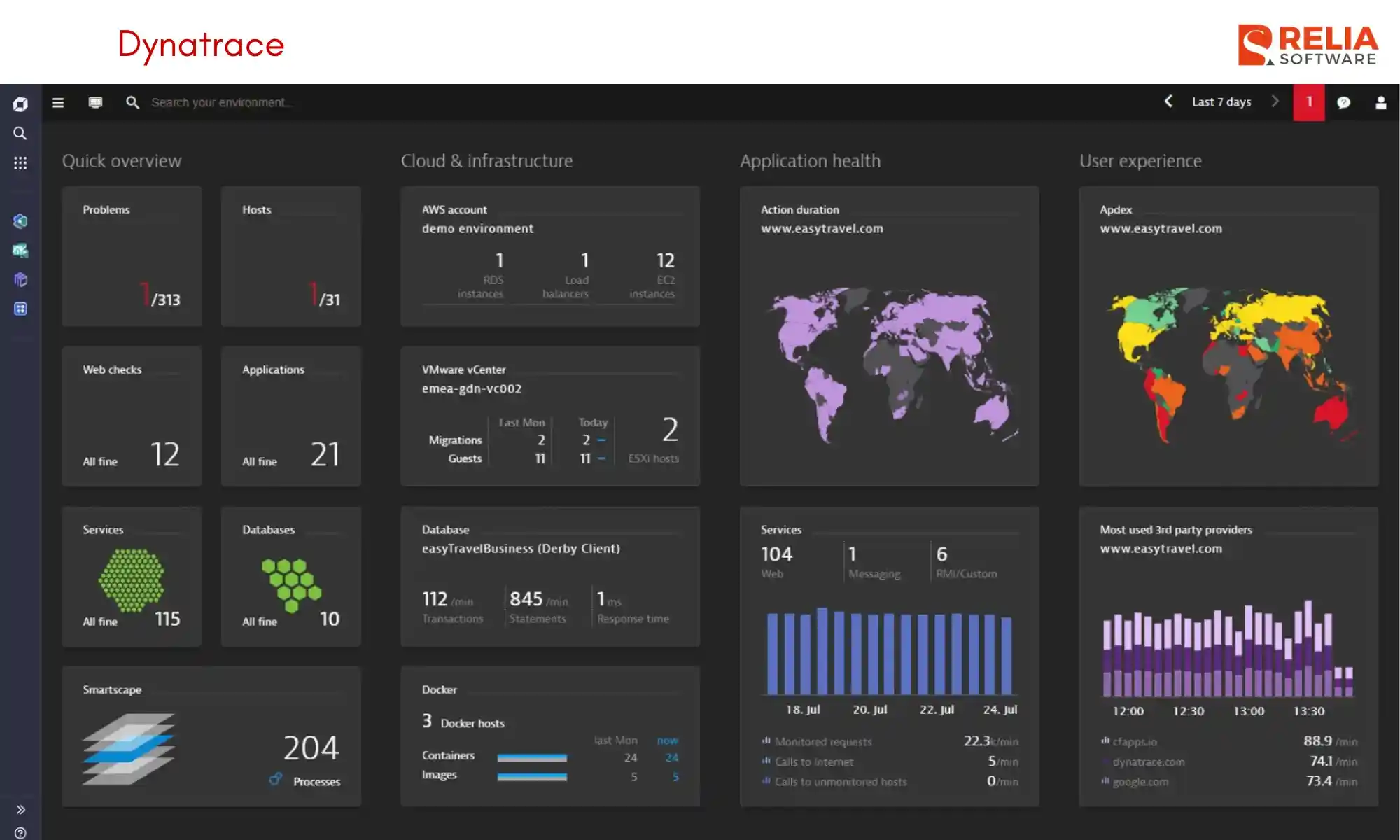
PagerDuty AIOps
While PagerDuty is widely used for incident management, its AIOps features help teams control alert noise and automate key parts of the incident response process.
Primary Use Case: Noise reduction and smart incident orchestration during outages.
Key AI Features
- Intelligent alert grouping: Uses machine learning to combine related alerts into one clear incident, so on-call engineers only get paged for real issues.
- Automated response mobilization: Identifies the type of incident and automatically brings in the right on-call teams, attaches runbooks, and triggers helpful diagnostic actions.
- Proactive suppression: Silences low-risk or repeating alerts that have already been addressed, keeping the team’s focus on new or meaningful threats.
Ideal For: Teams with heavy on-call loads who want automated response workflows.
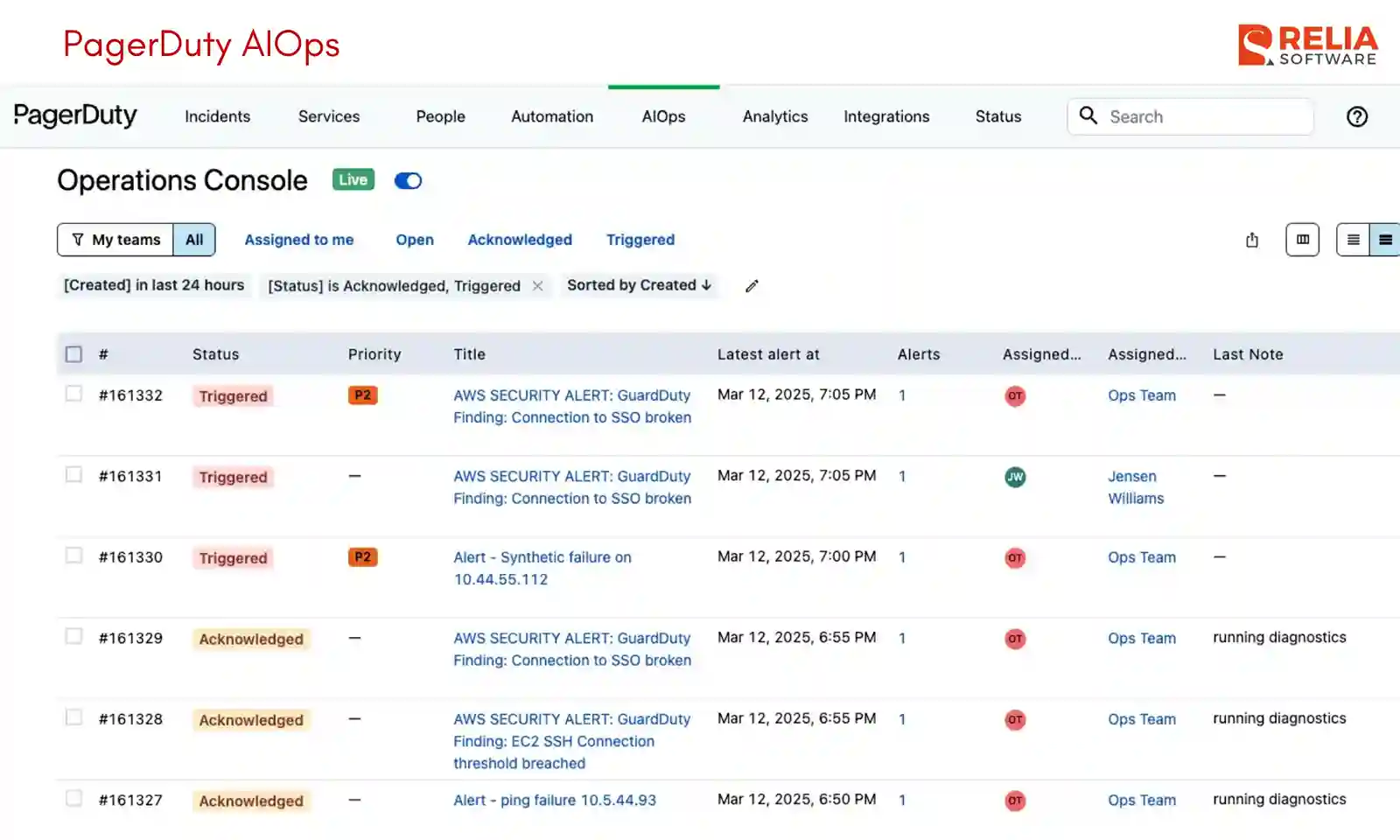
k8sGPT
k8sGPT is an open-source tool that works like an AI co-pilot for Kubernetes. It turns confusing events, logs, and error messages into clear explanations and practical fixes, making cluster debugging much easier.
Primary Use Case: Automated troubleshooting and diagnosis of Kubernetes clusters.
Key AI Features
- Contextual explanation: Connects to your cluster, collects errors and warnings, and uses an LLM to explain in plain English why pods or components are failing.
- Remediation suggestions: Offers clear, step-by-step guidance on how to fix issues, often including the exact kubectl command or configuration change needed.
- Custom analyzers: Can be extended to detect organization-specific issues or enforce internal standards.
Ideal For: DevOps engineers and SREs who want quicker, clearer explanations of cluster errors.

Before moving on to the next part, here is a table summary by use cases of these AI tools for DevOps above.
| Use Cases | AI Tools |
| AI Tools for Code Generation & CI/CD | GitHub Copilot, Ansible Lightspeed & Atlassian Intelligence |
| AI Tools for Security | Snyk, LambdaTest & AWS CodeGuru |
| AIOps & Observability Tools | Datadog, Dynatrace, PagerDuty AIOps & Sysdig |
| AI for Specialized Tasks | k8sGPT & Harness |
>> Read more: 11 Must-try AI Tools For E-commerce To Boost Your Business
How To Choose The Right AI Tools For Your DevOps Project?
Picking the right AI tool is more than comparing features. It’s about finding what will actually bring value to your team. Here are the key things to consider:
- Prioritize seamless integration: Choose tools that connect smoothly with what you already use. Poor integration creates extra work instead of reducing it.
- Avoid fragmented data: Make sure the tool can pull in logs, metrics, traces, and code activity from different sources. AI insights are only useful when the data is complete and connected.
- Know the data requirements: AIOps tools need clean and well-structured monitoring data. If your data is messy, the AI’s recommendations will be less accurate.
- Measure DORA metrics: Track the impact on key metrics like MTTR and Deployment Frequency. If these don’t improve, the tool isn’t delivering enough value.
- Start small: Test the tool in a limited, safe environment before rolling it out fully. This helps you understand its setup, accuracy, and real impact.
- Check usability: The best AI tools are the ones your engineers actually enjoy using. Look for clean interfaces, good documentation, and a low learning curve.
>> Read more:
- Top 9 Best DevOps Deployment Tools for Businesses
- Top 22 Best DevOps Automation Tools You Should Know
- 7 Necessary Network Debugging Tools for DevOps Experts
Conclusion
AI tools for DevOps are now essential for teams that want to move faster, reduce errors, and keep systems stable. By choosing the right tools for coding, security, automation, and operations, you can improve both speed and reliability across your entire pipeline. As DevOps grows more complex, these AI solutions are becoming the new approaches for building and running modern software.
>>> Follow and Contact Relia Software for more information!
- automation
